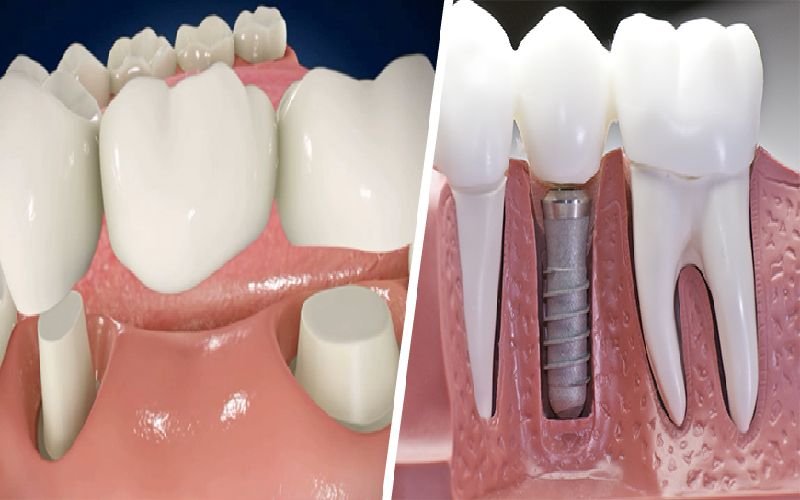
Menu
Bridgework
What is Bridgework?
Bridgework, or a dental bridge is when the dentist uses an artificial tooth, that has crowns on each side and attaches to other teeth. A dental bridge consists of artificial teeth — pontics — that are anchored on either side by natural teeth or dental implants. Abutments — common anchoring teeth, typically fitted with crowns to hold the bridge in place.

Types of Dental Bridges:
- Traditional Dental Bridge:
- The most common type, consisting of one or more pontics anchored by crowns on the adjacent natural teeth.
- Cantilever Bridge:
- Used when there is only one adjacent tooth to support the pontic. It is less common and typically used in areas of the mouth that don’t experience as much bite pressure.
- Maryland Bonded Bridge (Resin-Bonded Bridge):
- Involves bonding a metal or porcelain framework to the back of adjacent teeth. This method is less invasive as it doesn’t require crowns on adjacent teeth.
- Implant-Supported Bridge:
- Instead of being supported by natural teeth, this type is anchored by dental implants. It’s often used when multiple teeth are the missing.
The Dental Bridge Process:
- Preparation:
- If a traditional or cantilever bridge is used, the abutment teeth on either side of the gap are filed down to prepare for crowns.
- Impressions:
- An impression or digital scan of the prepared teeth and the gap is taken to create a custom-made bridge.
- Temporary Bridge:
- A temporary bridge may be placed while the permanent one is being fabricated.
- Fitting:
- Once the permanent bridge is ready, it is fitted and adjusted for comfort and function. It is then cemented or bonded into place.
Advantages of Bridgework:
- Restores function: Helps with chewing and speaking by replacing missing teeth.
- Prevents shifting: Keeps remaining teeth from moving out of position, which can lead to bite problems.
- Aesthetic improvement: Enhances the appearance of the smile by filling gaps caused by missing teeth.
- Cost-effective: Generally more affordable than dental implants.
Disadvantages:
- Requires the filing down of adjacent healthy teeth to place crowns.
- May not last as long as implants, with typical bridge lifespans ranging from 5 to 15 years depending on care.
- Can lead to bone loss in the area of the missing tooth since it doesn’t replace the tooth root like an implant.